
24 Oct Creating Street Appeal
Whether you are building a new home, selling the current home, or just looking to improve on what you already have – increase your street appeal with a feature tree.
It doesn’t matter if you have a large yard, or just space for one specimen – a feature tree is a great way to improve street appeal and make your house really stand out. A feature tree needs to be something which can stand alone, and still have impact so there are a few important features you will want to consider;
Evergreen or Deciduous Feature
A deciduous tree will lose all of its leaves at certain times of the year (normally winter), whereas an evergreen tree will be full of foliage, all the time.
A deciduous tree can be a great way to get contrast, while only using the one plant. It can allow warming winter sun into the home, and often a deciduous tree has a natural form and structure to it – this structure is a feature even when it is bare – think of Frangipani, Crepe Myrtle or Tropical Birch as great choices.
Crepe myrtles make ideal feature trees for home gardens, because they’re compact in size, and respond well to pruning. There are also dwarf forms available, which are more shrub-like in habit, and are suitable for growing in large tubs. Crepe myrtles need to be grown in an open sunny position, and young trees should be watered generously through summer.
Tropical Birch is a fast growing deciduous tree and is best birch for warm temperate climates like the Sunshine Coast. The red-brown bark peels to reveal a white trunk. It prefers moist to wet soils making it a useful tree to grow in boggy areas of the garden.
Frangipani – With their gorgeous blossoms and unmistakable fragrance, a frangipani is an ideal tree for the garden, whether you entertain in its shade or simply sit, admire its blooms and take in its irresistible scent. Although the flowers look delicate the trees are quite robust and can grow up to 8m. Photo: www.durhamhouse.com.au
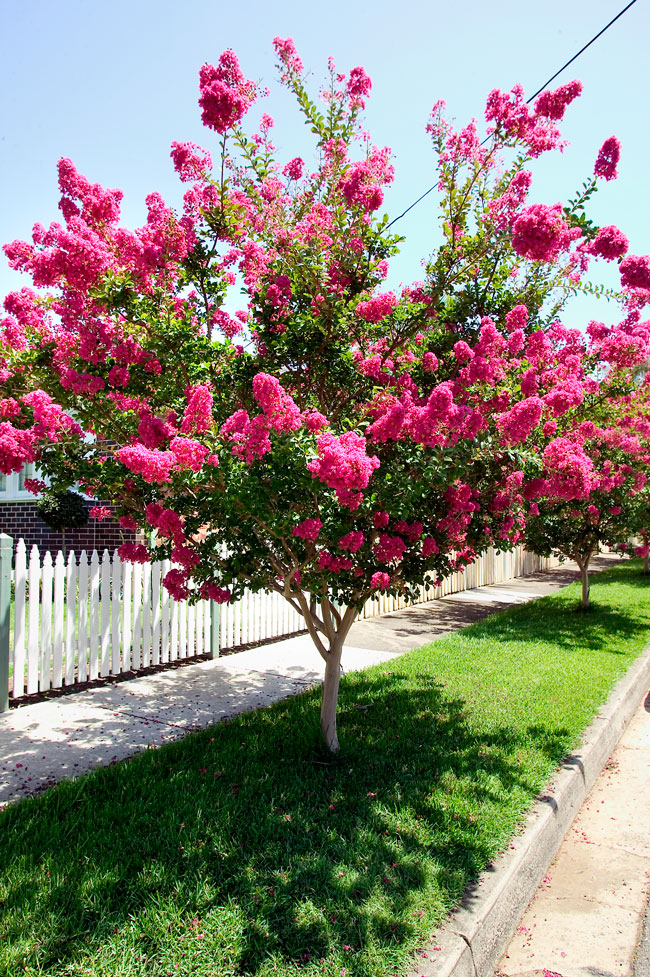
Crepe Myrtle in full bloom.
Photo: https://www.burkesbackyard.com.au/fact-sheets/in-the-garden/trees-and-palms/crepe-myrtle/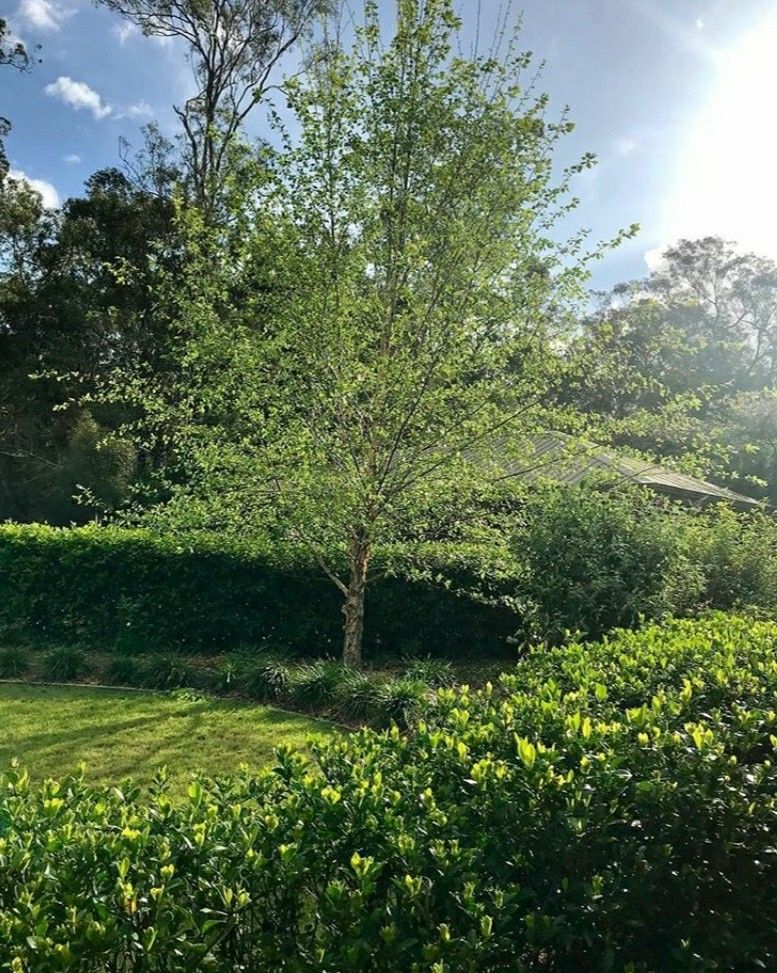
Tropical Birch is suitable for wet, boggy areas 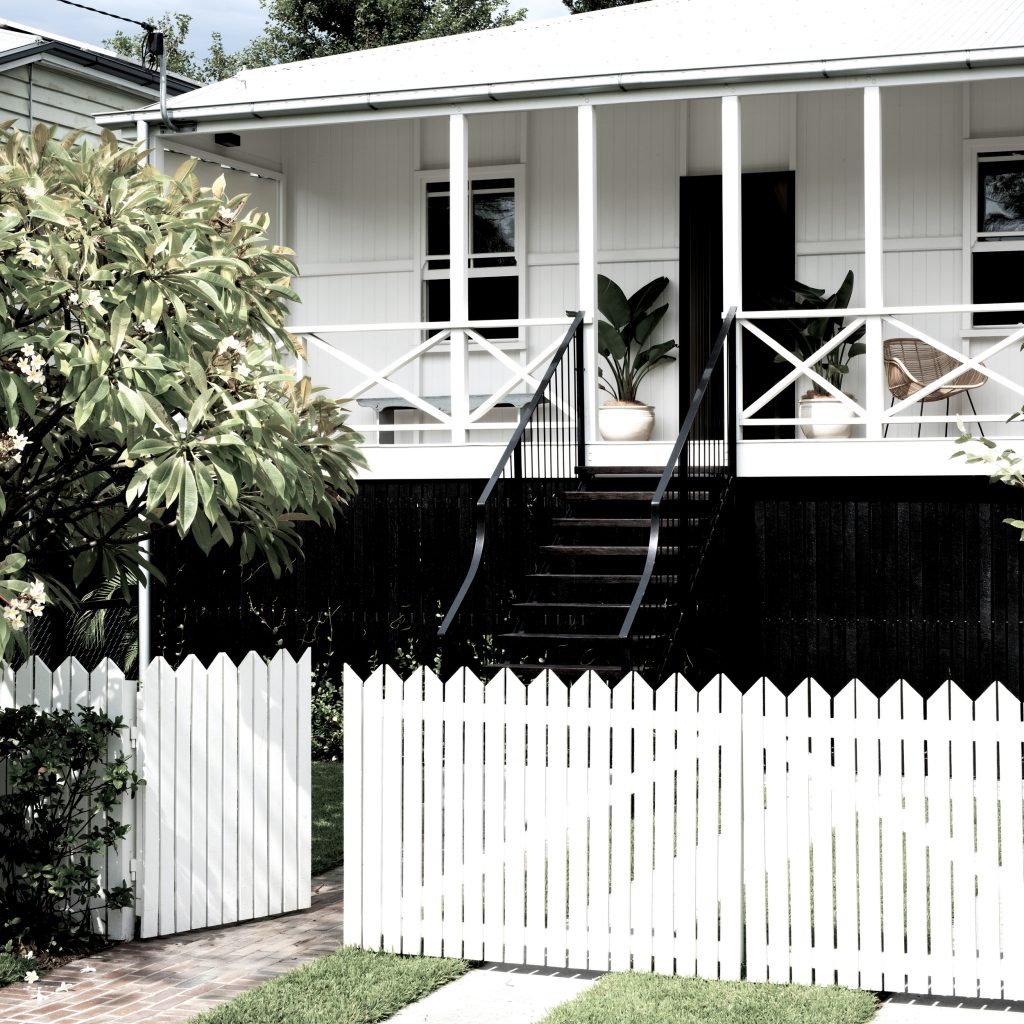
Durham House in Brisbane features a frangipani in the front yard.
https://www.durhamhouse.com.au/images/
An evergreen specimen can be a handy way to create privacy. This is often popular in smaller yards with close neighbours. Think of options such as Magnolia ‘Teddy Bear’, Buckinghamia ‘Ivory Curl’ or Backhousea ‘Lemon Myrtle’.
Backhousea ‘Lemon Myrtle’ – Grows 6 – 15 metres tall with a strong lemon-scented leaves to 10cm long. During Spring and Summer it produces a flourish of a white flowers attracting birds and butterflies.
Buckinghamia ‘Ivory Curl’ – have a dense umbrella shape, with glossy green foliage. They can be planted as a feature tree or mass planted for privacy. The trees develop into a nice shape with little pruning but can also be pruned to limit their size.
Magnolia ‘Teddy Bear’ – is s stunning feature tree reaching 4-5m tall and 2m wide. It has large fragrant white flowers in summer which contrast with the large, rounded glossy dark green leaves. Being naturally dense in growth it is ideal for tight spaces or even in large containers.
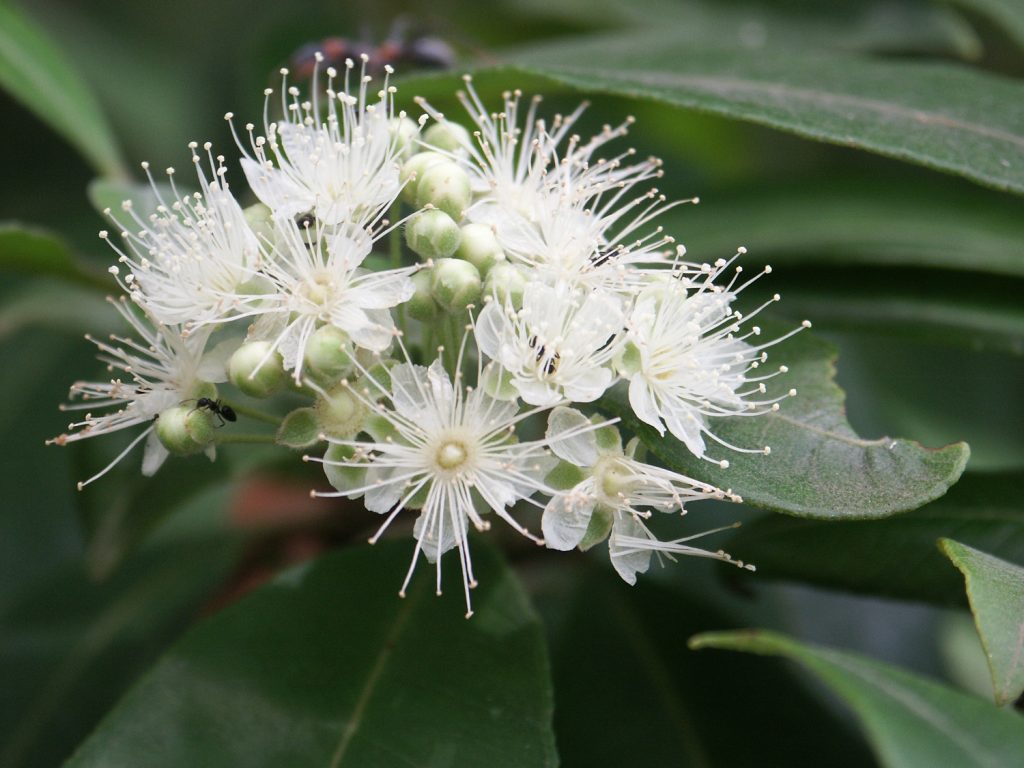
Backhousea ‘Lemon Myrtle’ 
Buckinghamia ‘Ivory Curl’ 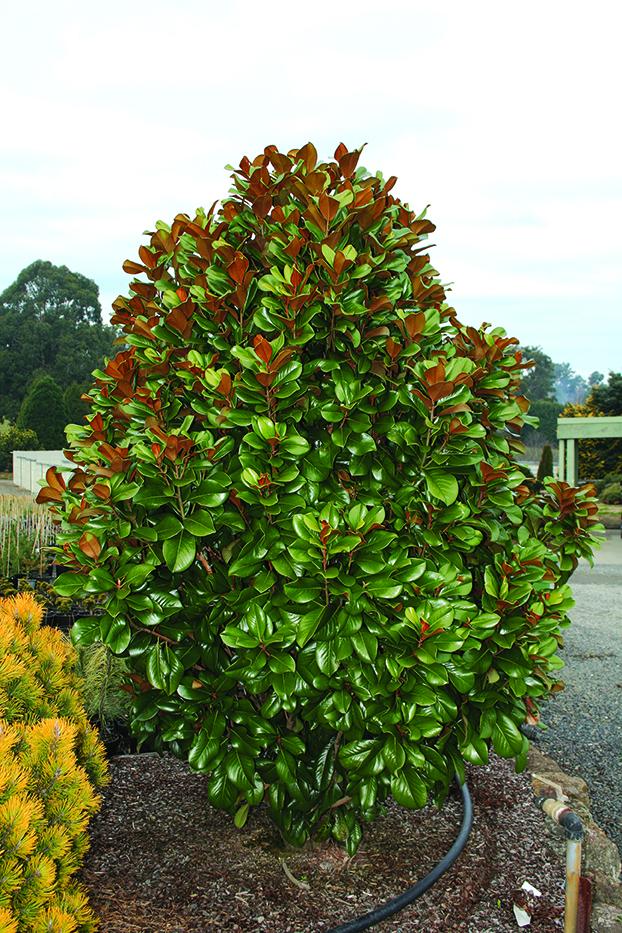
Magnolia ‘Teddy Bear’ 
Magnolia ‘Teddy Bear’ Flower
Upright or canopy – think about the shape you want from your tree.
Are you looking for a large spreading canopy to cast shade – maybe somewhere for the kids to play under? Great options worth considering for a canopy tree are Poinciana, Jacaranda or the Native Gardenia.
Native Gardenia – sometimes called Yellow Mangosteen is considered bush tucker by Aboriginal people. It’s hard-shelled fruits are 6-7cm in diameter, they can be eaten raw or used in salads, cakes and other desserts. Native Gardenia, when left to grow as a tree, can reach heights of up to 6m, providing some shade. With regular pruning, it may be kept in a pot or at shrub size, making it a fabulous display plant, particularly during flowering season.
Poinciana – Brisbane and Buderim are famous for Poinciana trees and can grow up to 10m, however their spreading growth habit, which can also be up to 10m, means the poinciana is not a tree for a small yard. It’s semi-deciduous, and sheds it old leaves in Spring with new leaves to follow immediately, because of this shedding it is not recommended to plant near a swimming pool.
Jacaranda – Scientifically named Jacaranda Mimosifolia, the blue jacaranda actually produces a pale indigo flower. They are fast-growing trees that bloom in spring or summer, with bell-shaped flowers covering the canopy. Their dramatic blooms create a purple haze that can be seen kilometres away, blanketing their trees and carpeting the ground.
https://www.bhg.com.au/where-to-see-jacaranda-trees-australia

Native Gardenia as a feature tree 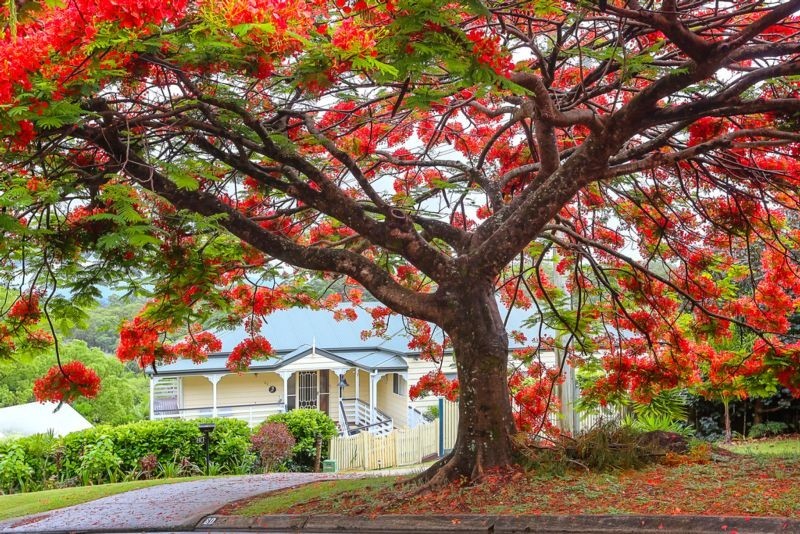
Poinciana in William Street, Buderim 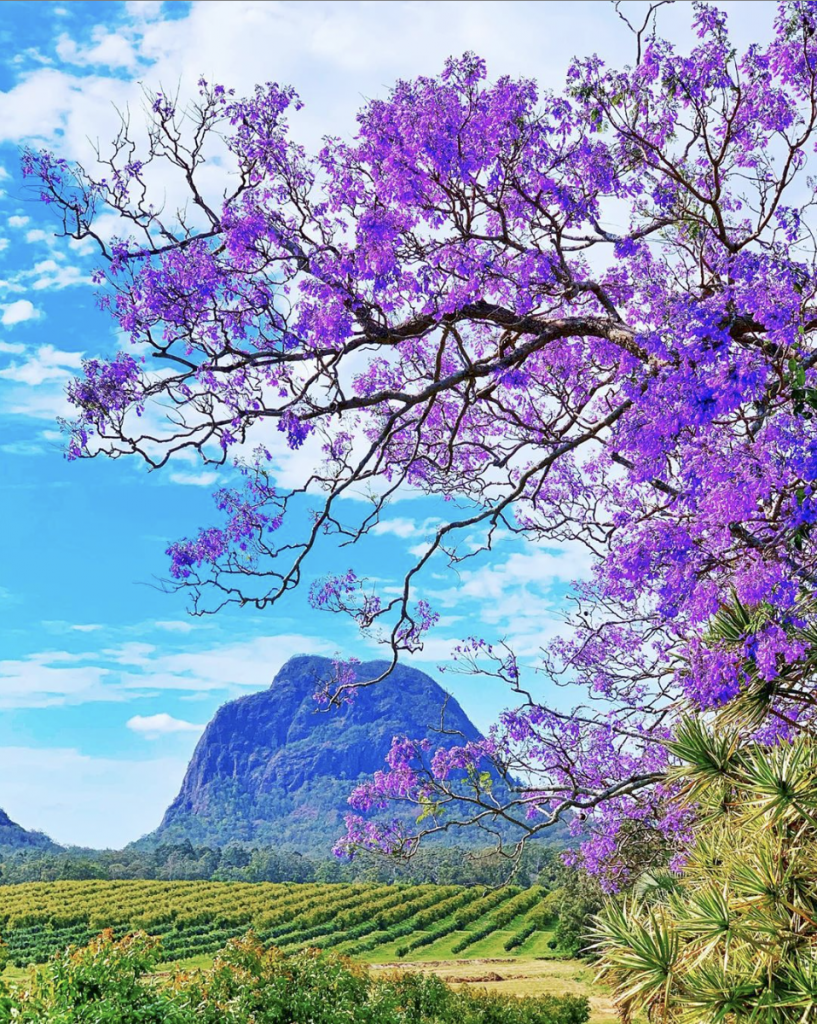
Jacaranda in bloom on Sunshine Coast. Photo by Melanie Augustin
https://www.instagram.com/melanie_augustin/
Or do you need a more formal upright shape to help cover the windows, or create privacy in a small space?
Magnolia ‘Little Gem’ or Tristaniopsis ‘Luscious’ grow in a more upright shape and for this reason suit smaller spaces.
Tristaniopsis ‘Luscious’ – has gorgeous shiny foliage topped off with red coloured new growth and yellow flowers with a sweet perfume. Its larger leaf size than the common form makes it a great native alternative to Magnolia. It will grow 7-12m high and 5m wide and will grow in full sun to part shade.
Magnolia ‘Little Gem’ – is a so called ‘dwarf’ magnolia but will still grow 6-10m tall and 5-8m wide. It is a useful feature tree that can be used for screening and responds well to shaping. Just like the Magnolia ‘Teddy Bear’ it has dark green glossy leaves with a dark orange/brown underside. During the winter months it produces large creamy-white flowers.
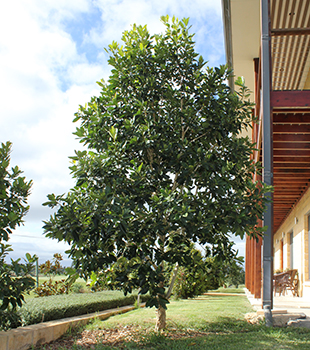
Tristaniopsis ‘Luscious’ as a stand alone specimen 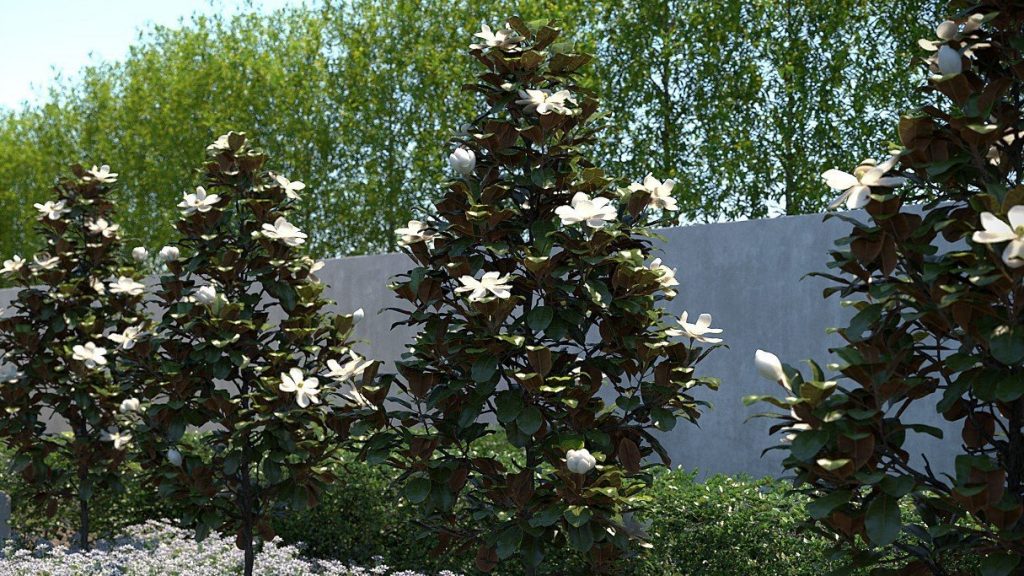
Magnolia ‘Little Gem’ planted along a fence.
Structural or Bushy Feature
Sometimes you want a tree which has a great structure and shape all by itself. And if it isn’t necessary for the tree to create privacy or shade, these options can really add something special to a space. Options for this might include Pandanus, Bismark Palms, Tree Aloe or even a QLD Bottle Tree. These varieties can really make a statement and create an eye catching feature at the front of your home.
Tree Aloe – makes for a striking architectural tree, with a massive trunk and high rounded crown. It typically grows to approx. 5m and will grow multiple branches over time. It requires good drainage. It is widely used as an ornamental tree in tropical and Mediterranean gardens.
Bismarck Palms – are one of the most sought-after and spectacular landscaping palms. They are a very large growing, impressive palm and take up plenty of space. When young the leaves are close to the ground so expect a footprint of 4m x4m but once they are bigger the leaves will be high in the sky.
QLD Bottle Tree – known for it’s characteristic trunk, which can grow to 2m in diameter. The tree will drop leaves during the flowering period between October and December. Traditionally the “bottle tree” was a source of food with the seeds, roots, stems and bark edible and the fibrous inner bark used to make rope or woven to make fishing nets.
https://www.anbg.gov.au/gnp/interns-2005/brachychiton-rupestris.html
Pandanus – provide instant impact to your garden and are perfectly suited to coastal gardens, but are more commonly associated with our beautiful coastline. The prehistoric look and aerial root system make this tree a curious and fascinating feature specimen. Photo and landscape by www.livingstylelandscapes.com.au
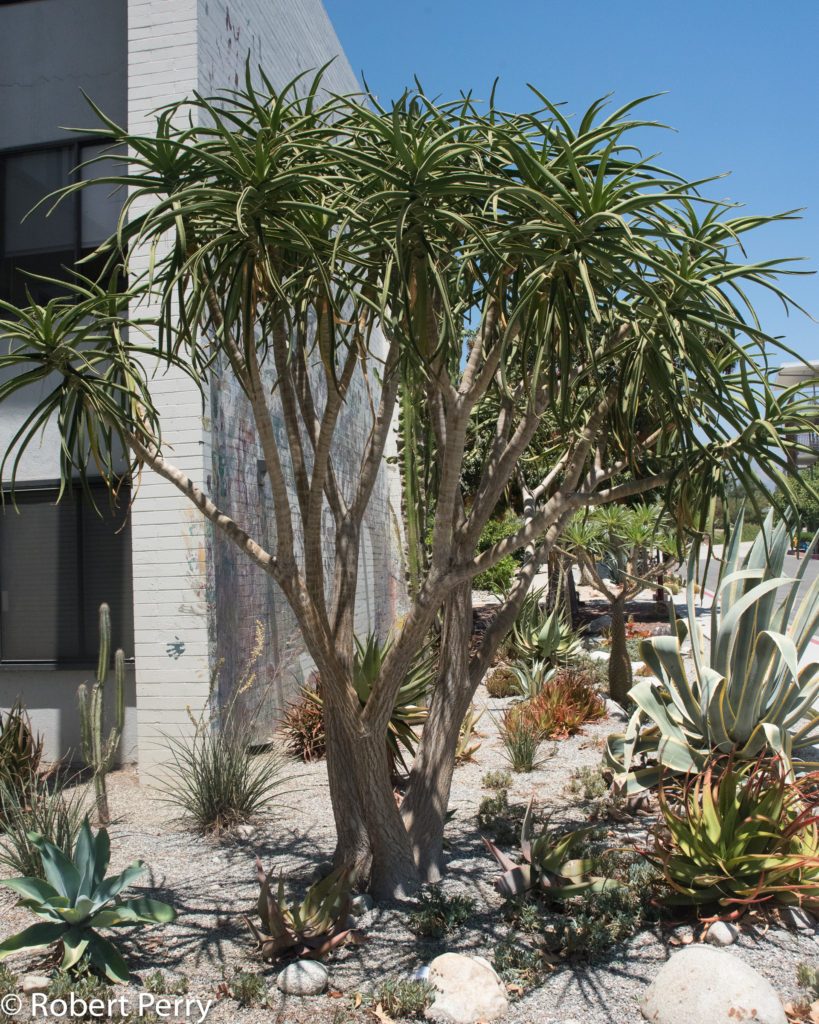
Tree Aloe in a Mediterranean garden https://inlandvalleygardenplanner.org/plants/aloe-barberae/ 
Bismarck Palms require lots of space 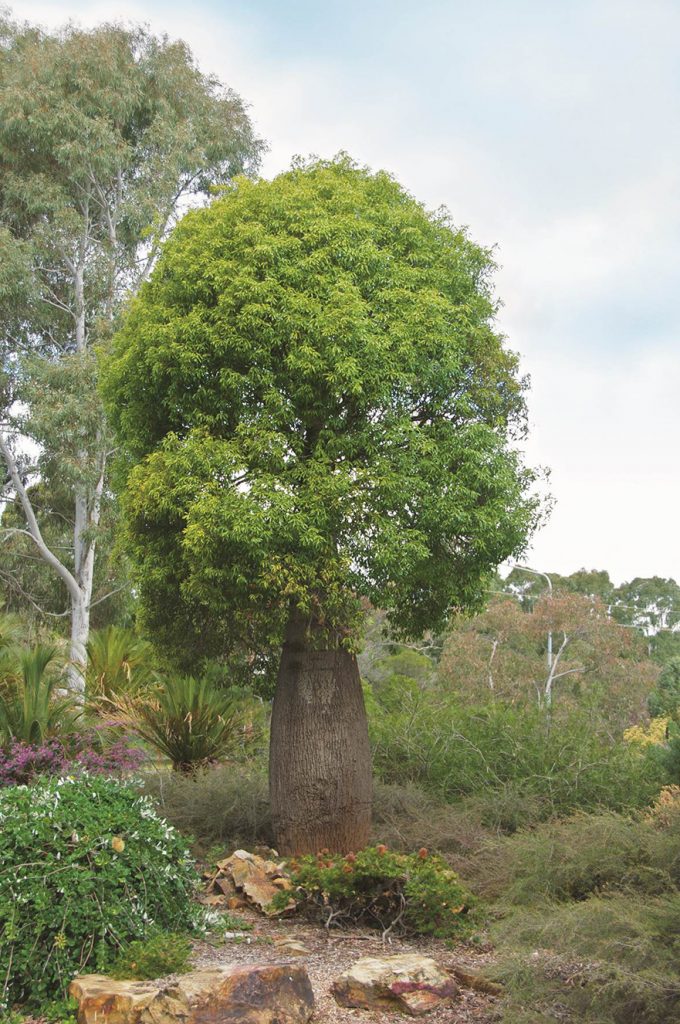
QLD Bottle Tree
https://www.homestolove.com.au/best-australian-native-feature-plants-3584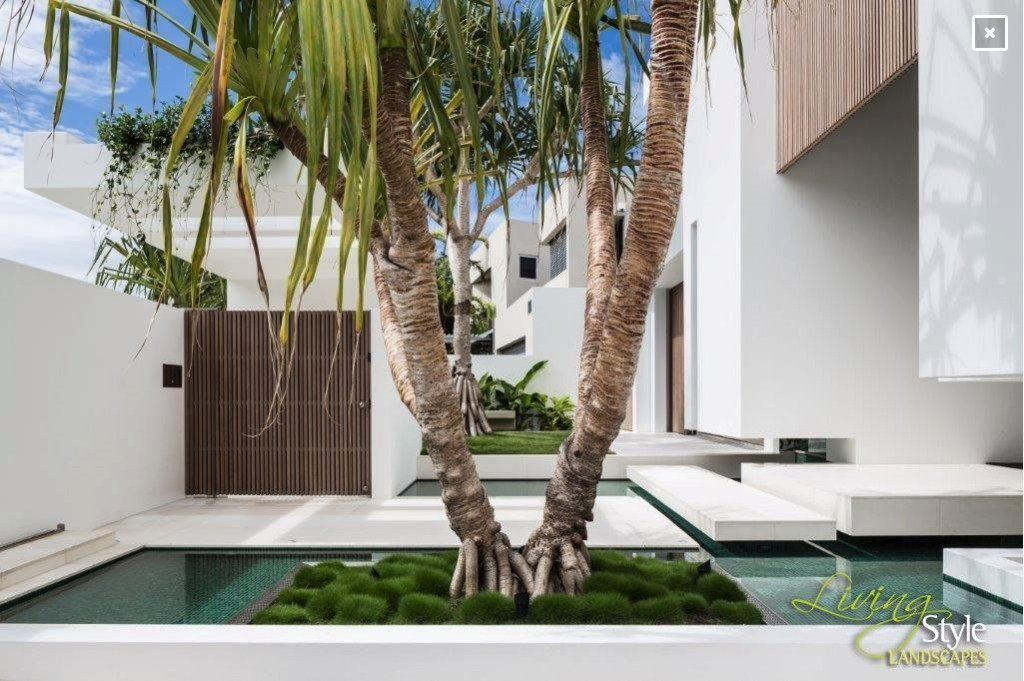
A Pandanus is the feature of this water feature courtyard by Living Style Landscapes.
http:// www.livingstylelandscapes.com.au
Remember to consider the mature size of your feature tree – as you don’t want to create more problems for down the track. Generally the larger the tree will grow, the larger the root system. And with larger canopy trees – this can mean a wider root system as well. Take care to note any underground services, as well as proximity to buildings and pathways. If existing underground structure is a problem it is possible to build raised planters, or even use large containers to help add to the feature, all helping to contain the root system of your tree.
Don’t forget to tidy up your existing garden beds. Prune over-grown plants, pull weeds and plant some flowering plants to add instant colour. Adding mulch helps to lift any garden bed and gives your plants, both new and old a boost.
Other ideas to increase your street appeal
If you’ve got a garden path, think about some outdoor lighting for safety and security. Lighting can add accent to highlight trees or the house or simply illuminate the front path. Solar powered lights are a great option for this.
Create an instant feature by using pots and planters to create some impact and instant curb appeal. Choose larger pots to create more impact and mix varying sizes to create interest. If you want to highlight your front door try using symmetry. Matching pots each side of the front door create warm, welcoming entryways.
View our online pot gallery for ideas.
And don’t forget about the lawn.
This takes time, feed your grass, treat any weeds and give it some time to grow into a lush lawn. And when it comes time to mow, make sure you check your neighbours and your footpath, a quick mow here can go along way if you are trying to sell your home.
A coat of paint on the old fence will help to finish and frame the look, giving it a fresh and clean look.
These simple elements go along way to increasing your homes value.
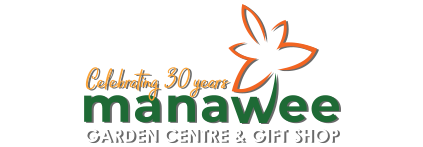

Susan Donoghue
Posted at 10:14h, 02 DecemberI would like a nice feature tree [approx.to 4 m] at the front of the home. It has good light but not a lot of direct sun. It would be situated in a garden bed close to the front of the house. Any suggestions ? I live at Woombye.
Manawee
Posted at 12:25h, 20 JanuaryHi Susan, I would suggest you pop into the nursery and speak to one of our team members. They will be able to help you choose the right tree. There are a lot of variables and it’s best to discuss these with our team. Bring a few photos of the site as well so we can get a clear idea of the site and size. Thanks Manawee.
Geoff Drewell
Posted at 19:28h, 07 OctoberRequire a 2 metre high Poinciana tree for a large lawn area for shade on a western full sun area
Manawee
Posted at 14:33h, 28 AugustHi Geoff, Our stock is still showing signs of winter, but 45L bags are available at approx. 1.8m, Please contact the nursery for current availability.
Keiran
Posted at 14:35h, 12 NovemberAbsolutely brilliant article. Thank you to the team at Manawee, this was extremely helpful and the effort to put it together is really appreciated. Thanks again!
Traci Ring
Posted at 15:00h, 26 MarchI’m looking for a Tropical Birch, any information would be greatly appreciated
Manawee
Posted at 14:31h, 28 AugustHi Traci, We have plenty in stock in a variety of sizes. Drop in and speak to our team, they’d be happy to help.
Eric McColough
Posted at 14:04h, 21 AugustHi there
I’m on the northern Gold Coast and have a 9x9m backyard. I’m looking for a 3 to 5m tree that takes full sun (it seems solitary palms grow taller?) and has a tropical vibe.
The soil and drainage are good,
I’m open to flowers (hibiscus?) but I’d like a single trunk and I’d like a 2 to 3m canopy to plant an understory.
Does anything come to mind?
Cheers
Eric
Manawee
Posted at 14:30h, 28 AugustHi Eric. Consider Hibiscus Tilliaceaous Rubra or Randia Fitzlanii for this situation. Both are flowering, compact trees that would suit your brief. With their large lush leaves they are a good addition to a tropical garden space. Manawee Team.